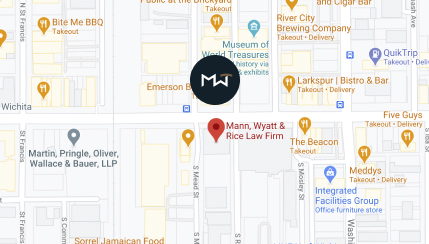What if I were to tell you that every second 28,258 people are watching pornography on the internet, and every day 68 million search queries related to pornography are generated? Honestly, you might not be shocked by these staggering figures. It’s no secret that pornography is prevalent in our society and easily accessible by anyone with an internet connection. Indeed, about 200,000 Americans are classified as “porn addicts” and roughly 40 million American people regularly visit pornographic websites. But what if I were to tell you that 93% of men and 63% of women report being exposed to internet pornography before the age of 18, with the average age of first exposure being 12 years old? Perhaps then you may be shocked, or even worried. But why? Why is it troubling that children have access to pornography? While the answer to this may seem to be common sense, most people are not aware of the full impact pornography can have on children. 1 2
Pornography Is Robbing Young People of Future Success
Pornography alters the structure and development of immature brains. Studies show that pornography addiction can damage the development of a teenager’s prefrontal cortex. In case you are like me, and don’t immediately know why this is significant – or even what a prefrontal cortex is – let me break it down for you. Every person’s brain has a dopamine reward center. Dopamine is a chemical in your brain that causes you to feel pleasure. It is released any time you do anything fun or enjoyable (such as eating your favorite type of chips, listening to music you enjoy, seeing a friend, etc.). Essentially, your brain is rewarding you for these encounters and telling your body “Hey this is a good thing! Keep doing this thing!” However, indulging in pleasure is not always a good thing. For instance, while it is nice to eat your favorite chips or watch your favorite T.V. show, a fully developed brain will say: “Hey! Don’t eat too many chips or you’ll gain weight!” Or perhaps “I know you want to watch another episode, but it is 11 p.m. and you have work tomorrow. You need to sleep!” This behavior is called delayed gratification, it is one of the most important behaviors a young person or child could exhibit, and it’s driven by your prefrontal cortex. 3 4 5 6
The Ability to Practice Delayed Gratification Is Critical for a Young Person’s Future Success
Delayed gratification is essentially the ability to resist the temptation of an immediate pleasure in favor of a more valuable reward in the future. Studies have shown this ability to delay reward is present in highly successful people. The most famous demonstration of this principle was the Marshmallow Test. The Marshmallow Test was a study conducted on 32 children which began by bringing each child into a private room, sitting them down in a chair, and placing a marshmallow on the table in front of them. A researcher would tell the child he was about to leave the room for 15 minutes and then return. They would then give each child the following option: (1) the child could eat the marshmallow now, or (2) the child could wait to eat the marshmallow until the researcher returned, in which case, the child would be rewarded with a second marshmallow.

Needless to say, this was a big task for each one of those children! Some immediately ate the marshmallow as soon as the researcher was out of sight. Many tried to wait but couldn’t withstand the temptation for long. Others were able to wait longer periods of time before eating the marshmallow, and a few were able to wait long enough for the researcher to return. Twenty years later, the same researcher sent a questionnaire to the parents of the children who participated in the study and asked them about their child’s SAT scores. The study found that the children’s ability to delay gratification longer had higher SAT scores. Subsequent replication studies have found that children who could delay gratification longer showed positive traits as an adult, such as higher self-esteem, self-worth, stress resistance, and lower BMI. In all, these studies demonstrate that the ability of a young person to practice delayed gratification is vital to their future success. 7 8 9 10 11
Porn Damages People’s Ability to Practice Delayed Gratification
As previously mentioned, under normal circumstances, one’s prefrontal cortex steps in to help a person say no to immediate pleasures so they can enjoy better future benefits. This is the driver that helps people go to the gym in the morning, despite their impulse to stay in bed or helps them study for a test, despite their impulse to surf the web. However, when a person is
going through addiction, their ability to control their impulses is weakened. This condition is called hypofrontality. “Hypo” simply means “less than normal” and “frontal” refers to the prefrontal cortex. As the name implies, hypofrontality involves decreased frontal cortex control over the brain’s impulses. People addicted to porn are no exception and will likely suffer from this condition.
In fact, a study found that consistently watching pornography changed people’s brains by shrinking areas responsible for the reward system and weakening its connection to the prefrontal cortex. This means pornography is literally shrinking people’s brains! Another study further found a causal relationship between viewing pornography and hyperfrontality. The study was divided into two parts. In the first part, heavy porn consumers were shown to be less capable of valuing long-term rewards over short-term ones. In the second part, the researchers divided the participants into two groups. Half were asked to abstain from porn for two weeks, while the other half abstained from their favorite food. Only those who abstained from porn improved their ability to appreciate long-term rewards. This implies that porn consumption doesn’t just correlate with hypofrontality, it causes it.
To say the least, viewing pornography messes with your brain’s reward system making it harder to practice delayed gratification. Delayed gratification is a vital characteristic for success in life. Since pornography has been shown to deprive young people of that characteristic, it is easy to see that pornography is depriving young people of future success. 12 13 14 15
Pornography Websites Target Children and Are Easily Accessible
It is no secret that pornography usage is prevalent among children. As previously stated, research shows 93% of boys and 62% of girls have seen pornography during adolescence. Another study found that one in five children ages 14-18 said they had a porn habit and one in 10 said this habit was an addiction. Porn companies are well aware of this fact. Take the following 2019 meme shared by Pornhub’s Instagram account for example:

While this meme may seem silly at first, it clearly demonstrates that Pornhub is aware of its mass viewership among children, and they are trying to normalize this phenomenon. After all, why wouldn’t they? Just like drug dealers, these websites have an interest in getting people addicted to their product while they are young and vulnerable.
Even if pornographic websites are not actively seeking out minor viewership, their failure to prevent minor consumption of their product is certainly just as harmful. It is not hard
nowadays for minors to find pornography. All they need is a device with an internet connection and they will have access to over 4 million pornographic websites. 4 MILLION – nearly 12% of the internet’s total content.
If you are unsettled by everything you have read so far, you are not alone. Thirteen states have passed laws requiring pornography websites to verify the ages of their users and deny access to minors. Sixteen more states hope to pass age verification laws later this year. Most of the bills follow the policy recommendations laid out by the Institute for Family Studies (IFS) and the Ethics and Public Policy Center (EPPC) in 2022. Regarding the reasoning behind these recommendations, the IFS and EPPS state:
“Some states already place age restrictions on numerous behaviors known to be dangerous or inappropriate for children, such as driving, smoking, drinking, getting a tattoo, and enlisting in the military, among other things . . . Even in the face of mounting evidence that Big Tech is exacting an unacceptable toll on our teens, neither Congress nor the Courts have taken adequate steps to protect children from platforms that promote anxiety, envy, pornography, loneliness, sleeplessness, and suicide. . . it falls to the states to step into the breach and act now to better empower parents and protect children online.”
Accordingly, thirteen states (and hopefully sixteen more) have decided to take action and treat pornography like other addictive and harmful substances such as alcohol or tobacco. These efforts have been bipartisan, and largely effective. 16 17 18 19 20
Kansas’ Porn Age Verification Bill
Kansas joined this fight on April 25, 2024, when Kansas lawmakers passed SB 394. In a nutshell, the law requires pornographic websites to use “commercially reasonable” age verification techniques to verify that a Kansas visitor is 18 before they are allowed access to the website. If the website fails to do so, it is subjected to the law’s consequences and penalties. The law became effective on July 1, 2024. 21
What Are “Commercially Reasonable” Age Verification Techniques?
While the law does not specify the exact technique these websites must use, it does require that the technique be reasonable. In the legal world, this is what we call a standard as opposed to a rule. To understand this dichotomy, think of a posted speed limit sign. Normally the sign reads something like “Speed Limit 35 MPH.” This would be considered a rule. A bright line that clearly relays what should or should not be done. A standard is a little more ambiguous and open to interpretation. Imagine if the sign said something different, such as “Drive at a safe speed.” This would be considered a standard. Obviously, what should be done is less clear as reasonable minds could disagree as to what exactly constitutes a “safe speed.” We can likely all agree that 25 MPH is a safe speed, and perhaps 90 MPH is not a safe speed. But what do we do about everything that lies in between?
For those situations, we would likely have to do an analysis that considers all the different facts surrounding the case. For instance, if a person is driving 65 MPH, whether that is considered a “safe speed” will depend on a myriad of variables. Was the person driving in a school zone, or on a highway? Was traffic heavy, or light? Was it sunny, or snowing?
All these factors play an important role in determining whether the standard is met. Regarding SB 394, the word reasonable indicates the standard these websites must meet. According to Black’s Law Dictionary, reasonable means “[a]greeable to reason; just; proper. Ordinary or usual.” With this definition in mind, let’s run through a few scenarios to try to flush out what might, or might not be reasonable.
“Check yes if 18+.” This sort of test is likely the first verification technique that comes to mind. Given the fact that lawmakers want to make it harder for children to access pornography and the fact that it is easy to lie, it seems like the purpose of the law would be thwarted by this technique. In fact, I would liken this kind of technique to the gate pictured below:

Seems kind of useless, doesn’t it? I think was can all agree that this method would likely be considered unreasonable.
Next, let’s consider the technique of examining government-issued ID. Generally, when a business is selling an age-regulated substance such as alcohol or tobacco, they will check a customer’s ID before selling it to them. This seems pretty reasonable given a driver’s license or other government-issued ID is a reliable method of proving age. While such documentation can be forged, it would certainly be hard for most young teenagers to obtain a fake ID. However, there are some differences between an actual storefront and a pornographic website. Namely in the former scenario, an employee and a customer are physically present and can physically hand over an ID. In the latter scenario, this is made more difficult. However, there are such things as digital ID wallets (DIW). A DIW is a secure app that stores and manages personal information and identity credentials. DIWs can store a variety of information, including driver’s licenses, passports, and other government-issued IDs. While setting one up may be a slight burden on an adult who wishes to view pornography, that burden pails in comparison to the “public health crises” and “corroding influence” that pornography has on minors. Thus, there is a good argument that this verification technique is reasonable. 22
What Happens if My Minor Child Views Pornography?
If a pornographic website is not using a commercially reasonable age verification technique, and your child is able to view their content, Kansas law gives parents standing to the parent or legal guardian of the minor to sue on their behalf for: (1) actual damages resulting from a minor’s access to pornography; (2) statutory damages in an amount not less than $50,000; and (3) reasonable attorney fees and costs. This means that if your child was able to watch porn, you likely have standing to sue on their behalf for over $50,000. However, in order to commence a suit, you need evidence of your claim. This evidence can be found in things such as your child’s browser history, IP logs from your internet service provider, or screen records from an anti-pornography VPN such as Covenant Eyes.
What Do I Do Now?
If you find out that your child has viewed pornography after July 1, 2024, it is very likely that the website your child was on did not use a reasonable age verification technique. If you wish to file a lawsuit against that website, you should be sure to collect evidence that your child accessed the website and contact Mann Wyatt Tanksley Injury Attorneys so we can help you pursue a claim on your child’s behalf.

Citations
- Webroot. (n.d.). Internet pornography by the numbers. Retrieved July 12, 2024, from https://www.webroot.com/us/en/resources/tips-articles/internet-pornography-by-the-numbers[↩]
- Institute for Family Studies. “What Happens When Children Are Exposed to Pornography.” Accessed July 12, 2024. https://ifstudies.org/blog/what-happens-when-children-are-exposed-to-pornography[↩]
- Bark. (n.d.). The dangers and damages of porn: Facts parents need to know. Retrieved July 12, 2024, from https://www.bark.us/blog/porn-dangers-damages/[↩]
- Hilton DL, Watts C. Pornography addiction: A neuroscience perspective. Surg Neurol Int 21-Feb-2011;2:19. Available from: https://surgicalneurologyint.com/surgicalint-articles/pornography-addiction-a-neuroscience-perspective/[↩]
- Costumero, V., Barrós-Loscertales, A., Bustamante, J. C., Ventura-Campos, N., Fuentes, P., Rosell-Negre, P., & Ávila, C. (2013). Reward sensitivity is associated with brain activity during erotic stimulus processing. PloS one, 8(6), e66940. https://doi.org/10.1371/journal.pone.0066940[↩]
- Latzman RD, Taglialatela JP, Hopkins WD. Delay of gratification is associated with white matter connectivity in the dorsal prefrontal cortex: a diffusion tensor imaging study in chimpanzees (Pan troglodytes). Proc Biol Sci. 2015 Jun 22;282(1809):20150764. doi: 10.1098/rspb.2015.0764. PMID: 26041344; PMCID: PMC4590457. https://www.ncbi.nlm.nih.gov/pmc/articles/PMC4590457/[↩]
- PositivePsychology.com. (n.d.). Delayed gratification: What it is and why it’s so important. Retrieved July 12, 2024, from https://positivepsychology.com/delayed-gratification/[↩]
- Shoda, Y., Mischel, W., & Peake, P. K. (1990). Predicting adolescent cognitive and self-regulatory competencies from preschool delay of gratification: Identifying diagnostic conditions. Developmental Psychology, 26(6), 978–986. https://doi.org/10.1037/0012-1649.26.6.978[↩]
- Ayduk, Ozlem & Mendoza-Denton, Rodolfo & Mischel, Walter & Downey, Geraldine & Peake, Philip & Rodriguez, Monica. (2000). Regulating the interpersonal self: Strategic self-regulation for coping with rejection sensitivity. Journal of personality and social psychology. 79. 776-92. 10.1037//0022-3514.79.5.776. https://rascl.studentorg.berkeley.edu/assets/files/ayduk_2000_journal_of_personality_and_social_psychology_regulating_the_interpersonal_self__strategic_self-regulationfor_coping_with_rejection_sensitivity.pdf[↩]
- Schlam TR, Wilson NL, Shoda Y, Mischel W, Ayduk O. Preschoolers’ delay of gratification predicts their body mass 30 years later. J Pediatr. 2013 Jan;162(1):90-3. doi: 10.1016/j.jpeds.2012.06.049. Epub 2012 Aug 18. PMID: 22906511; PMCID: PMC3504645. https://pubmed.ncbi.nlm.nih.gov/22906511/[↩]
- https://www.youtube.com/watch?v=XcmrCLL7Rtw&ab_channel=TheBrainwavesVideoAnthology[↩]
- Volkow, N. D., Wang, G. J., Fowler, J. S., Tomasi, D., Telang, F., & Baler, R. (2010). Addiction: decreased reward sensitivity and increased expectation sensitivity conspire to overwhelm the brain’s control circuit. BioEssays: news and reviews in molecular, cellular and developmental biology, 32(9), 748–755. https://doi.org/10.1002/bies.201000042[↩]
- “How Porn Can Affect the Brain Like a Drug.” Fight the New Drug, https://fightthenewdrug.org/how-porn-can-affect-the-brain-like-a-drug/. Accessed 17 July 2024.[↩]
- Kühn S, Gallinat J. Brain structure and functional connectivity associated with pornography consumption: the brain on porn. JAMA Psychiatry. 2014 Jul 1;71(7):827-34. doi: 10.1001/jamapsychiatry.2014.93. PMID: 24871202. https://pubmed.ncbi.nlm.nih.gov/24871202/[↩]
- Negash, S., Sheppard, N. V., Lambert, N. M., & Fincham, F. D. (2016). Trading Later Rewards for Current Pleasure: Pornography Consumption and Delay Discounting. Journal of sex research, 53(6), 689–700. https://doi.org/10.1080/00224499.2015.1025123[↩]
- https://www.theguardian.com/society/2023/mar/10/porn-study-survey-uk-teenagers-addicted[↩]
- Ahmed, “The Internet is For Porn: Measurement and Analysis of Online Adult Traffic,” https://www.cse.msu.edu/~farazah/adult_icdcs16.pdf[↩]
- https://dailycitizen.focusonthefamily.com/pornography-age-verification-laws-what-they-are-and-which-states-have-them/[↩]
- https://dailycitizen.focusonthefamily.com/pro-family-think-tanks-offer-smart-policy-ideas-protecting-children-from-big-tech/[↩]
- https://www.politico.com/news/magazine/2023/08/08/age-law-online-porn-00110148[↩]
- https://www.sos.ks.gov/publications/sessionlaws/2024/Chapter-28-SB-394.html[↩]
- https://www.sos.ks.gov/publications/sessionlaws/2024/Chapter-28-SB-394.html[↩]







 Site by
Site by